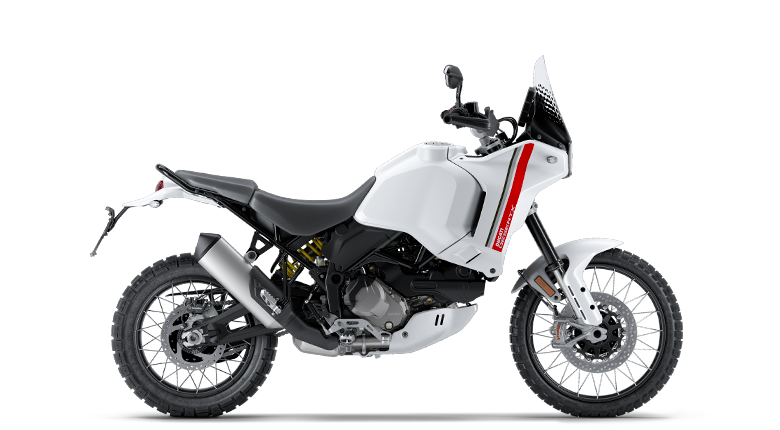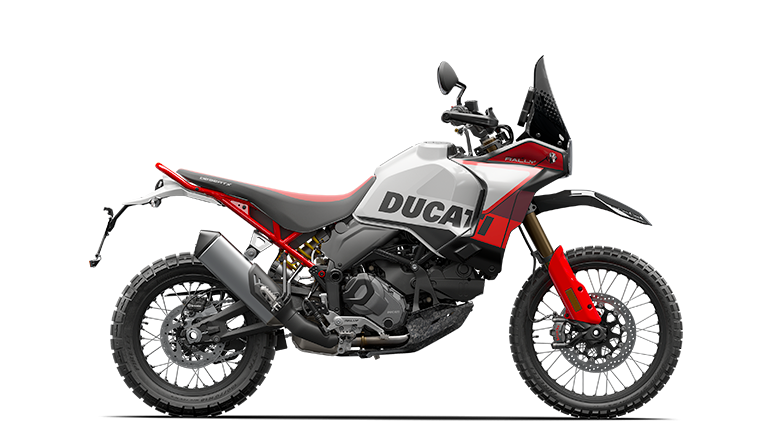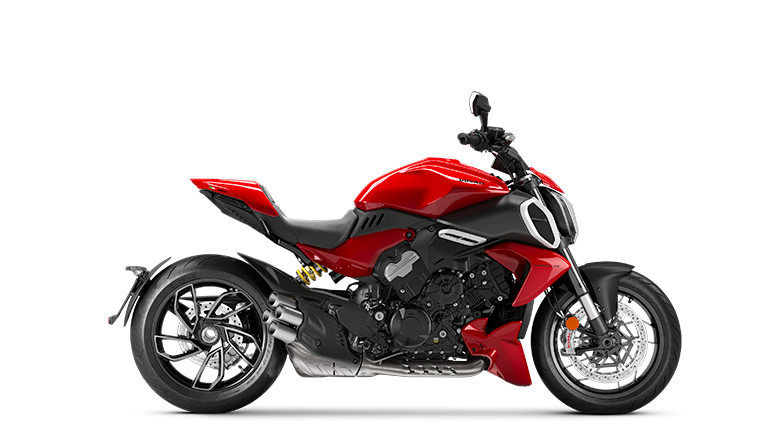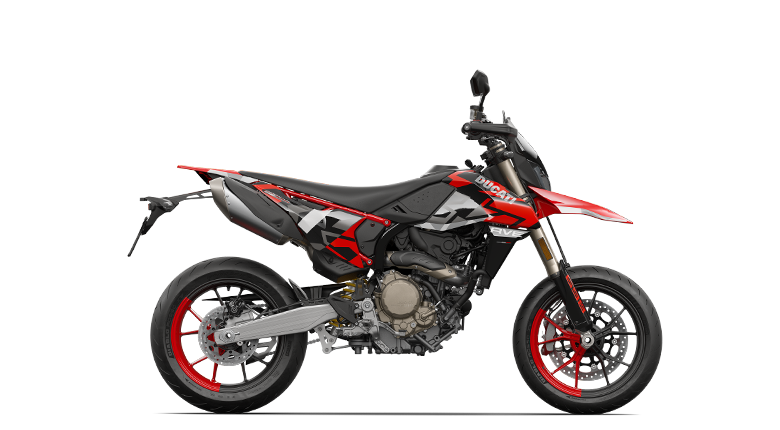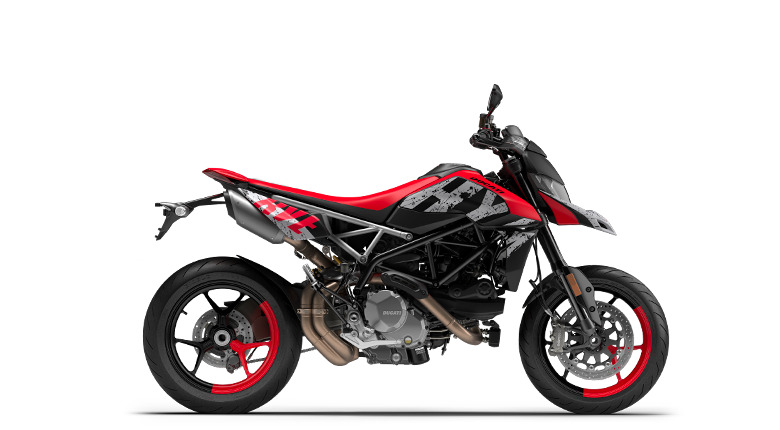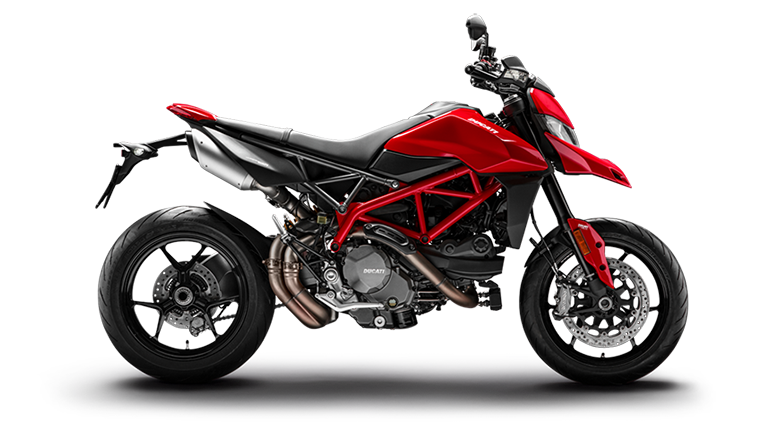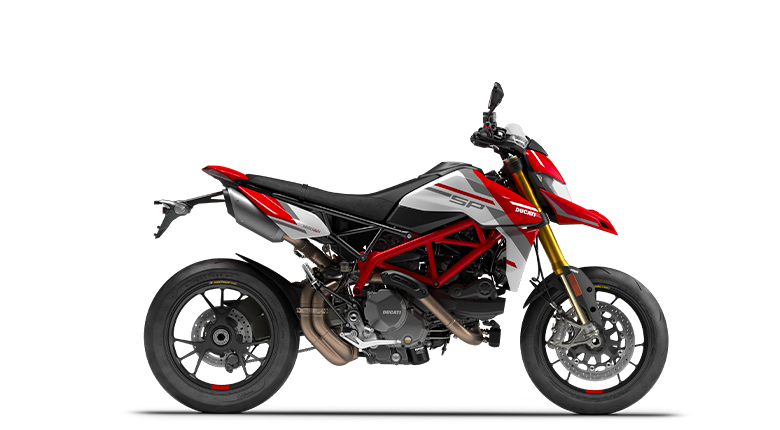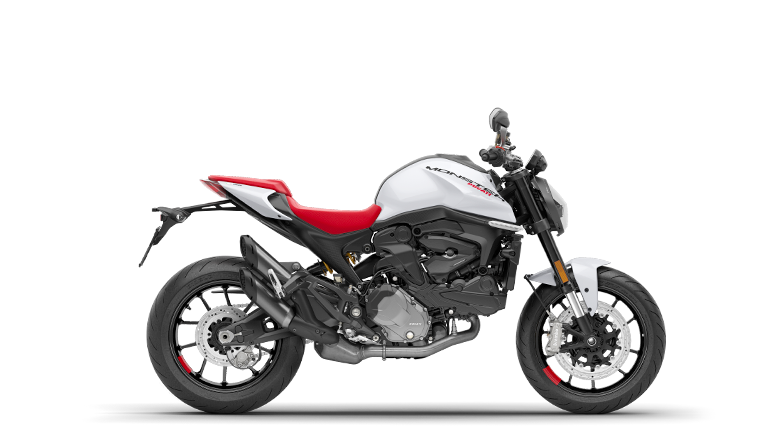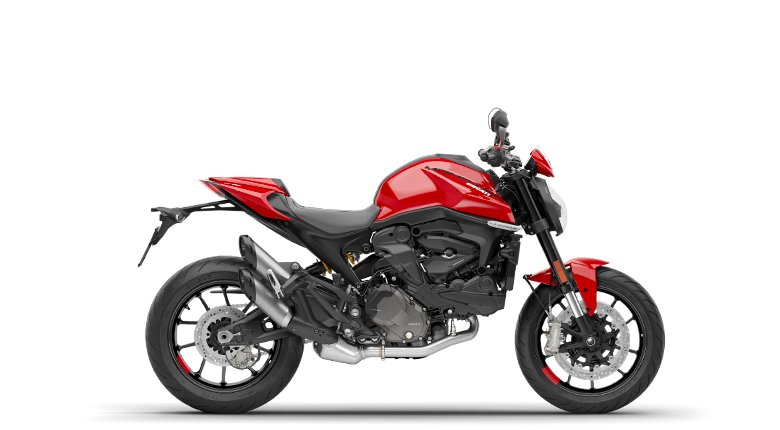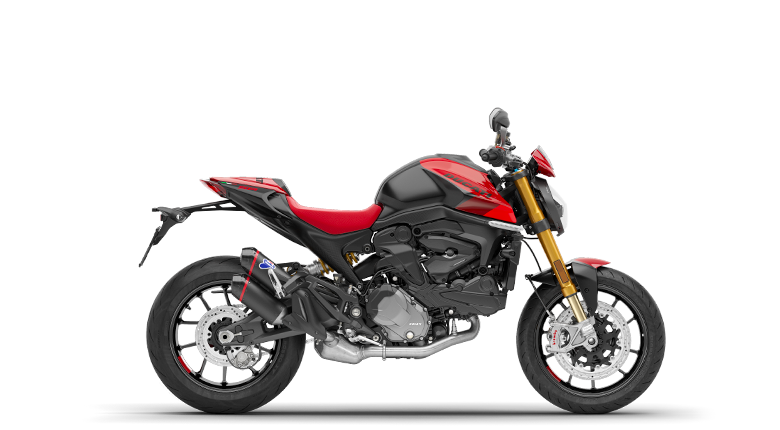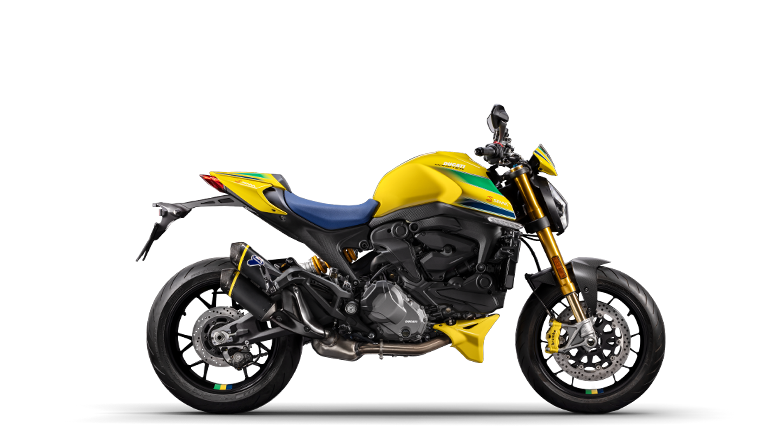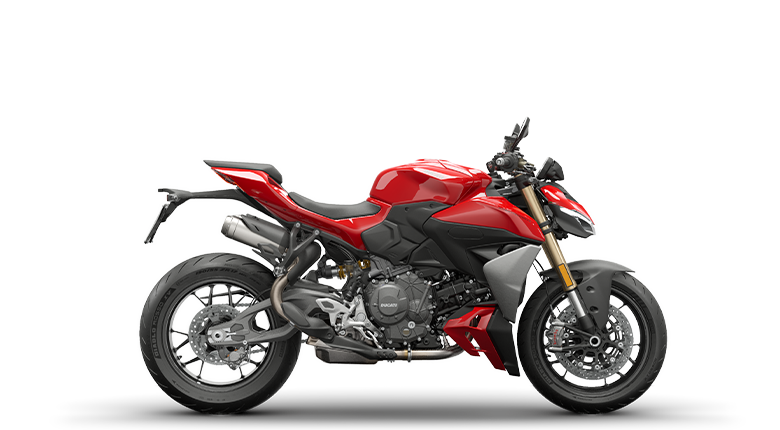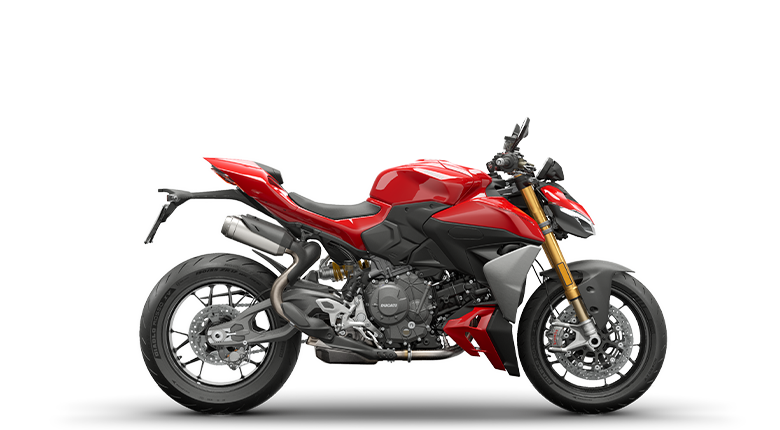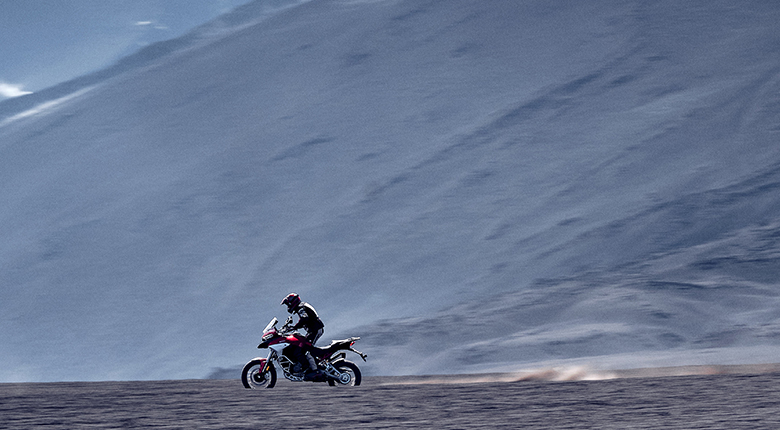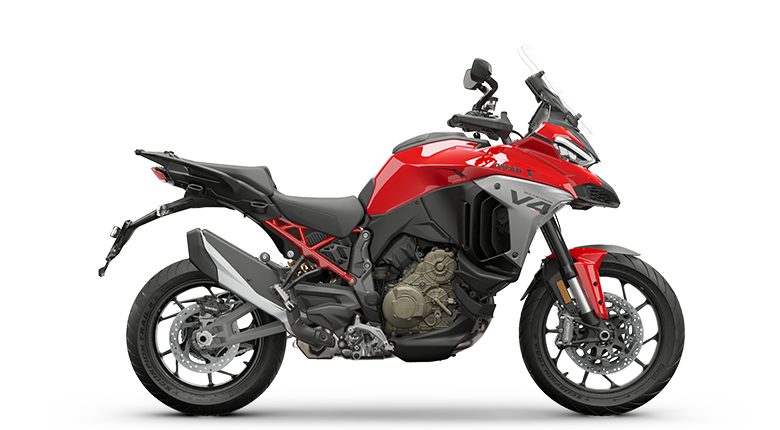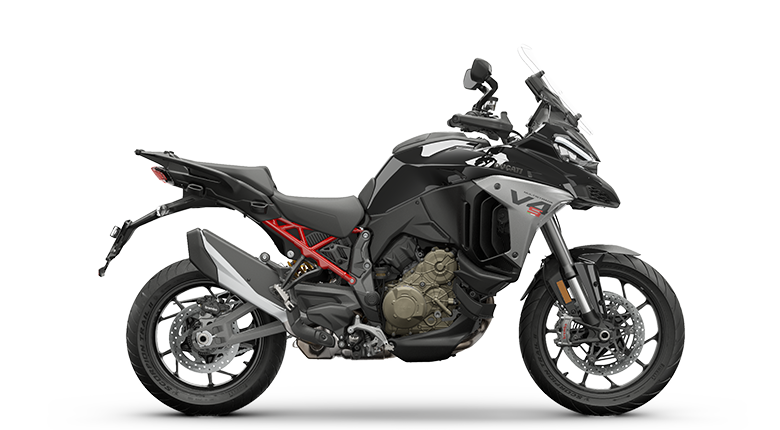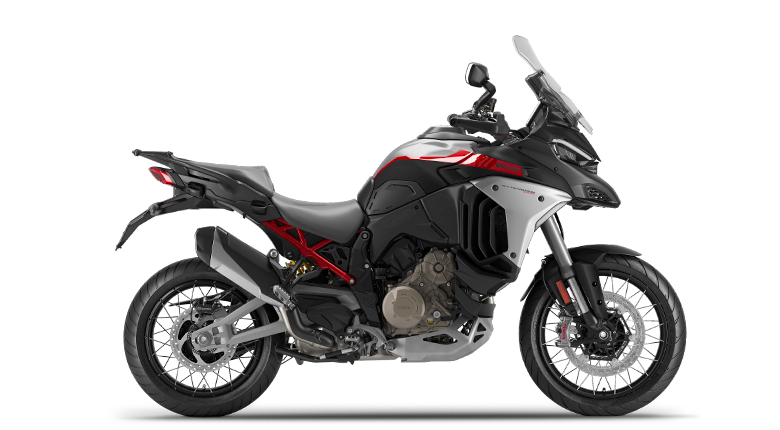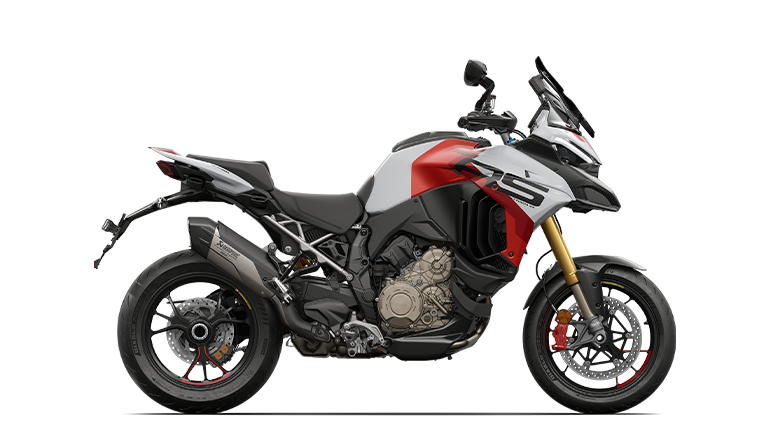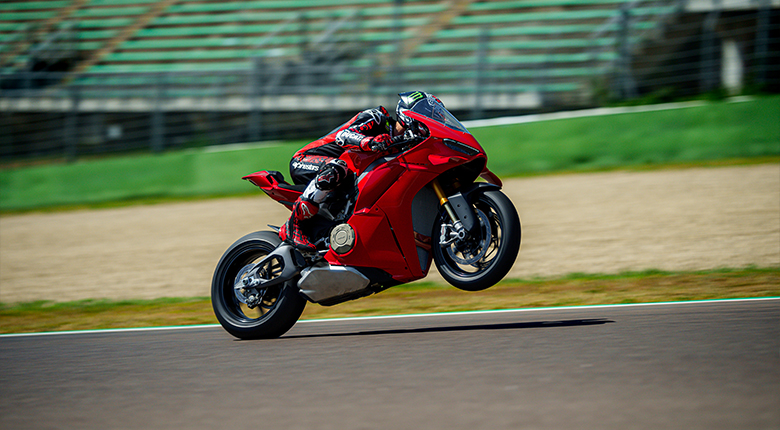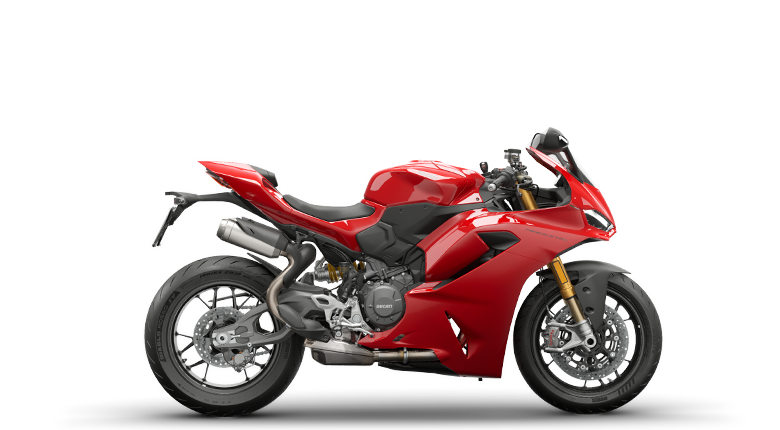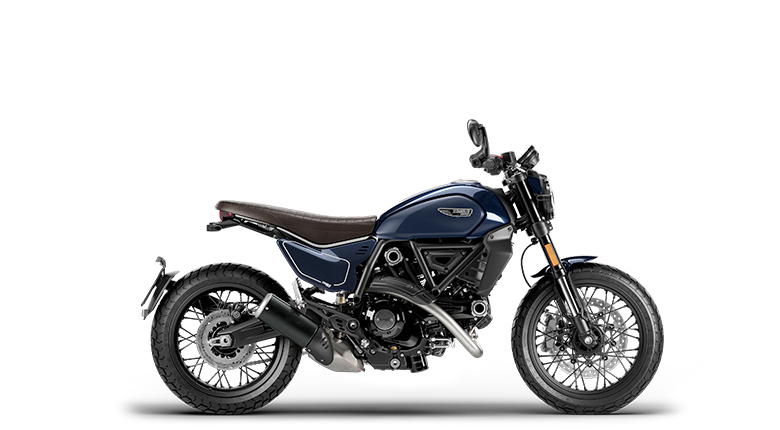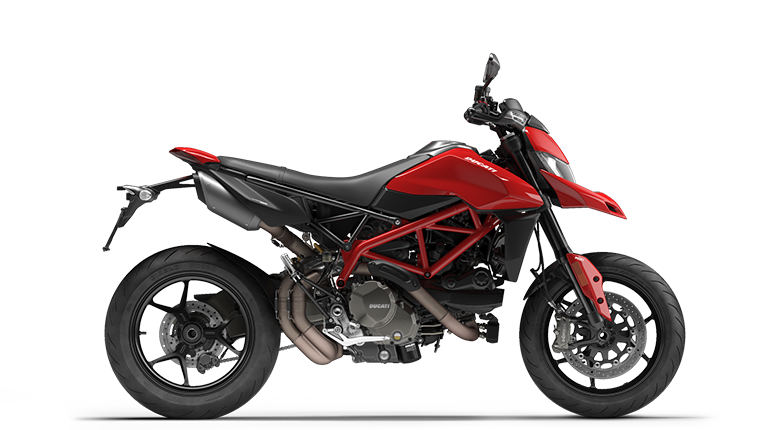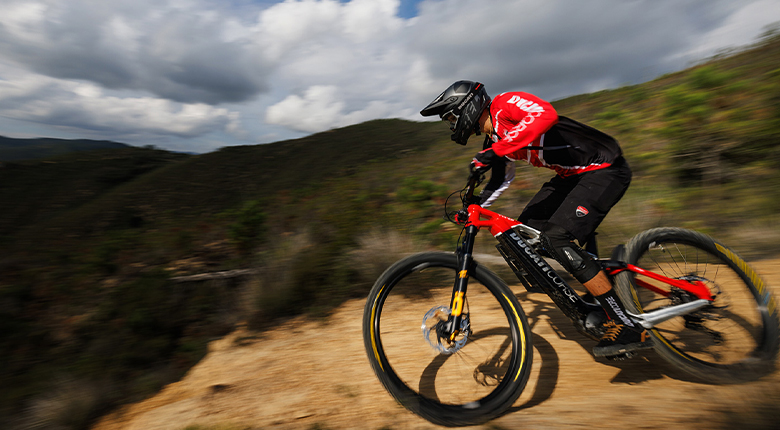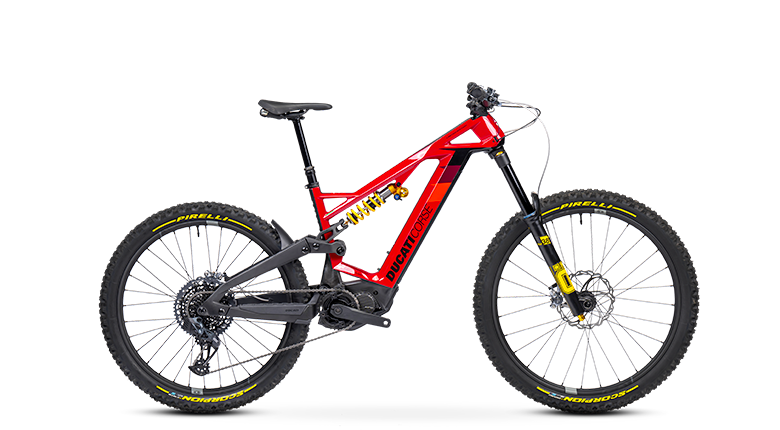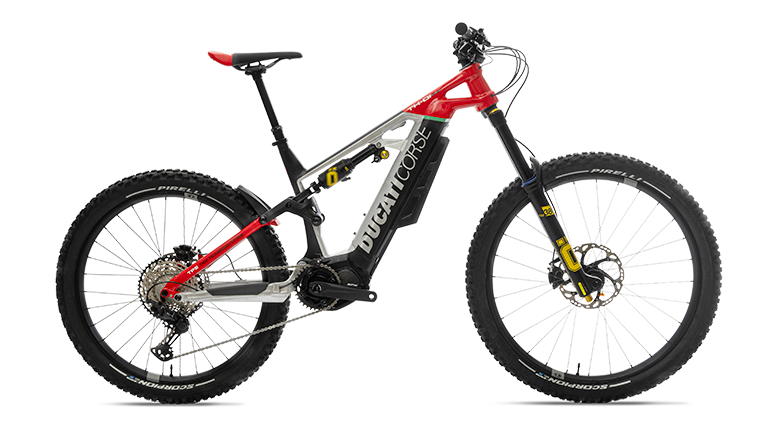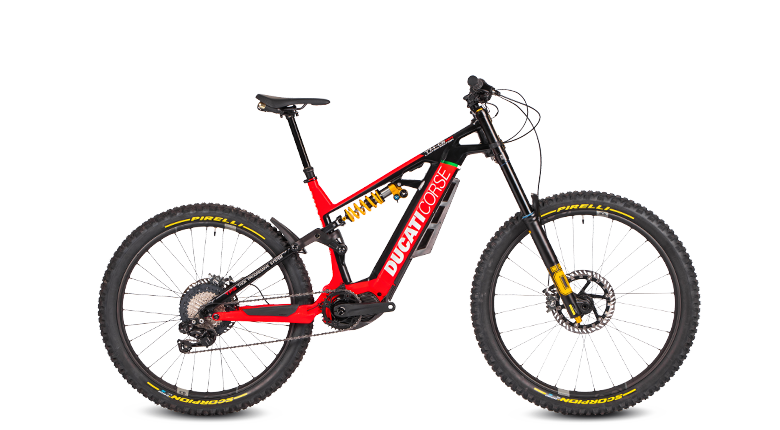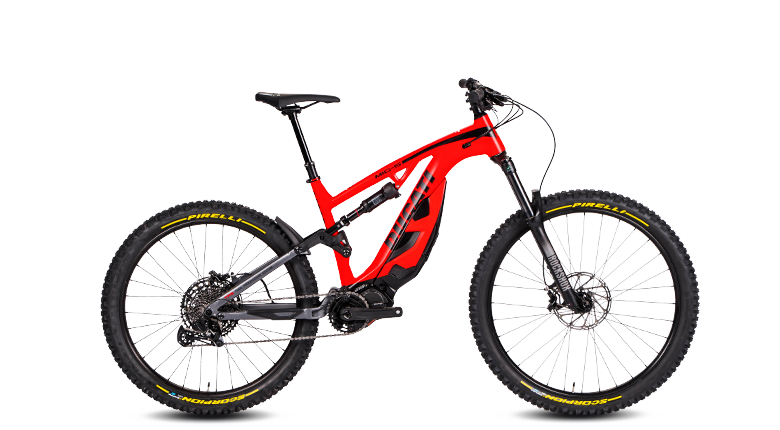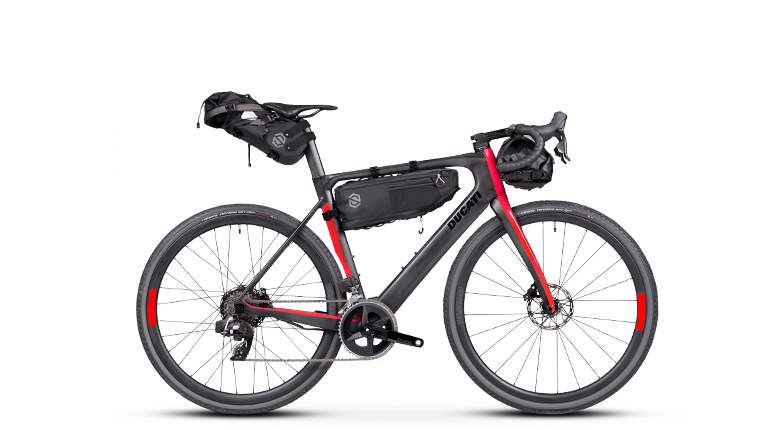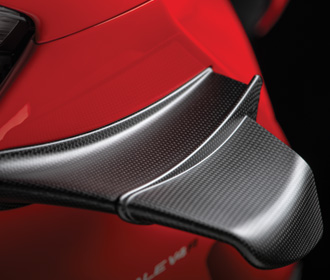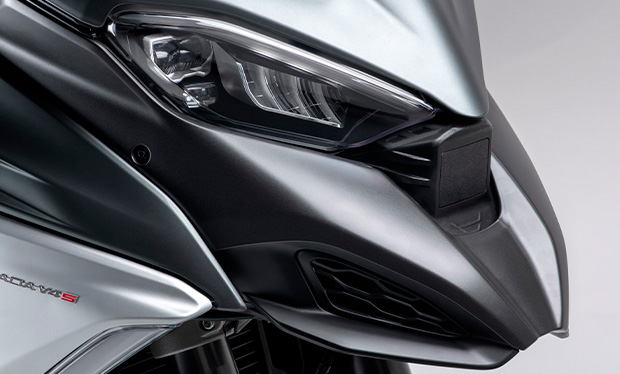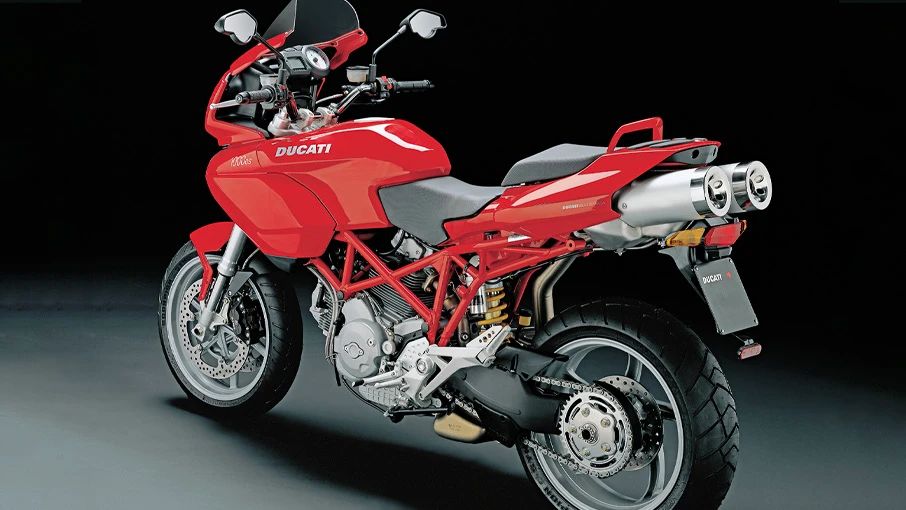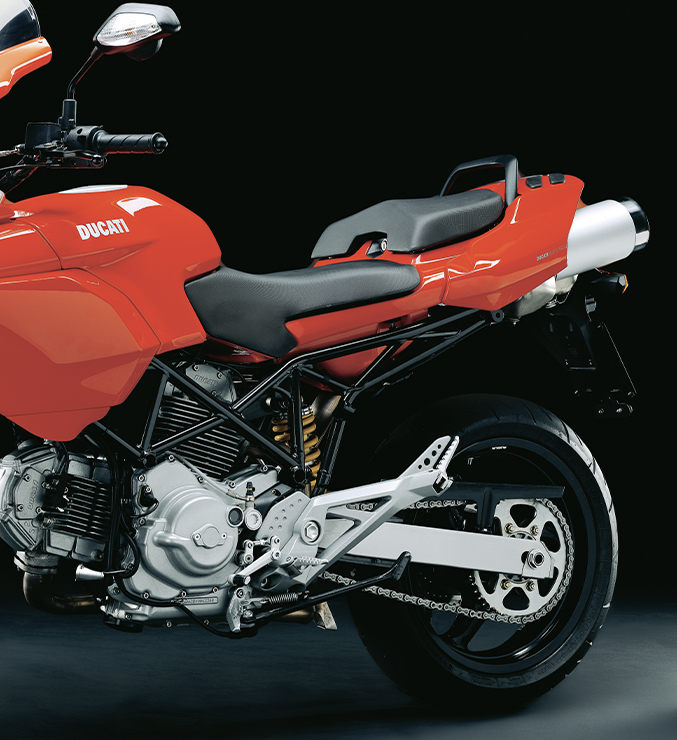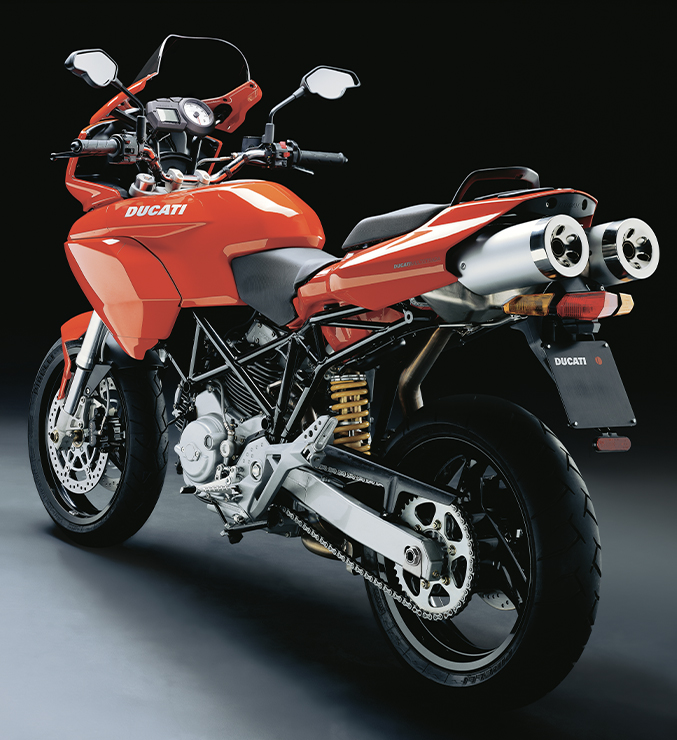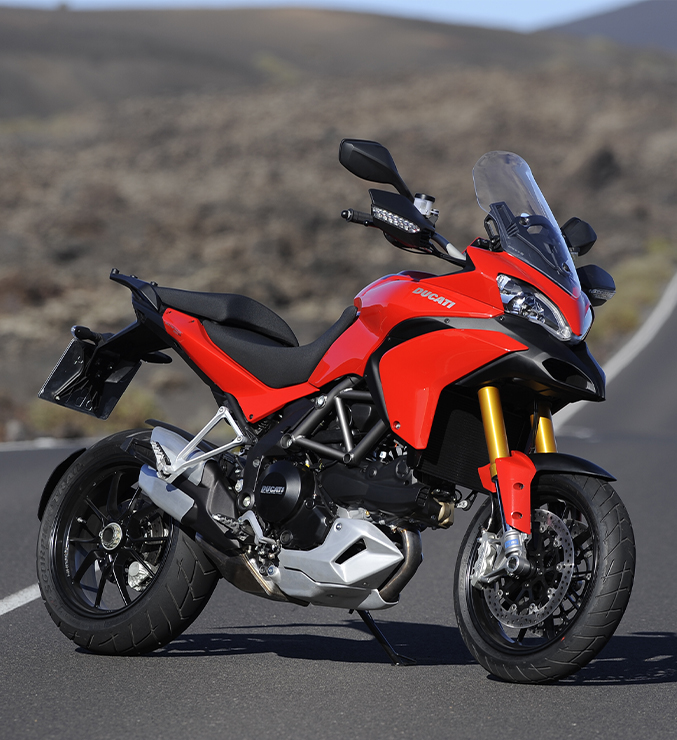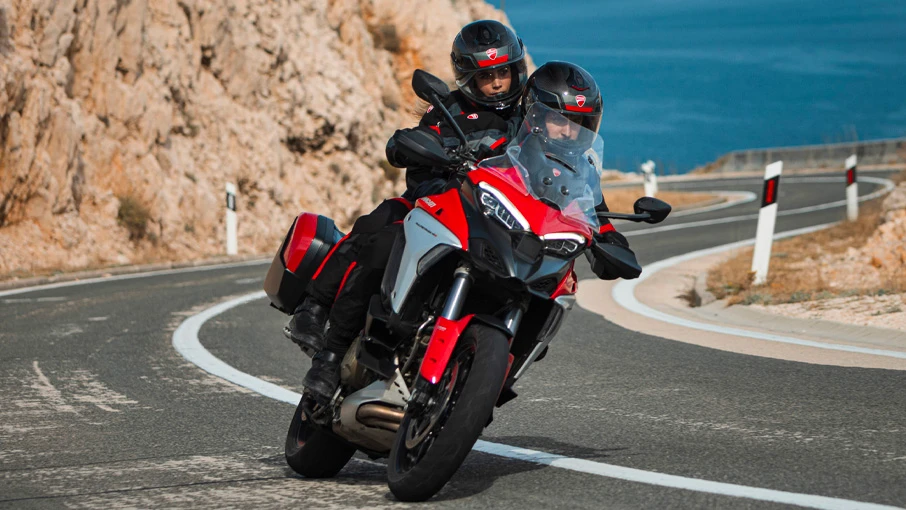The most aggressive configuration is Sport, which sees the single shock and fork set to stiff, unleashes the engine’s full power, offers a direct throttle response and adjusts the traction control to a level of 3, on a scale of 1 to 8.
-
Models
-
DesertX
![]()
- DesertX Family
-
new
DesertX Discovery
![]() DesertX Discovery
DesertX Discovery- 110 hp Power
- 92 Nm Torque
- 210 kg Wet Weight No Fuel
From SEK 213,000 KR
NOK 290,100 KR i - DesertX
-
Rally
![]() DesertX Rally
DesertX Rally- 110 hp Power
- 92 Nm Torque
- 211 kg Wet Weight (No Fuel)
From SEK 239,000 KR
NOK 330,300 KR i
DesertX -
Diavel
![]()
-
XDiavel
![]()
-
Hypermotard
![]()
-
698 Mono
![]() Hypermotard 698 Mono
Hypermotard 698 Mono- 77.5 hp Power
- 63 Nm Torque
- 151 kg Wet Weight (No Fuel)
From SEK 141,000 KR
NOK 186,300 KR i -
950 RVE
![]() Hypermotard 950 RVE
Hypermotard 950 RVE- 114 hp Power
- 96 Nm Torque
- 151 kg Wet Weight (No Fuel)
From SEK 172,000 KR
NOK 232,200 KR i -
950
![]() Hypermotard 950
Hypermotard 950- 114 hp Power
- 96 Nm Torque
- 193 kg Wet Weight (No Fuel)
From SEK 160,000 KR
From NOK 220,800 KR i -
950 SP
![]() Hypermotard 950 SP
Hypermotard 950 SP- 114 hp Power
- 96 Nm Torque
- 191 kg Wet Weight (No Fuel)
From SEK 203,000 KR
NOK 275,400 KR i
Hypermotard -
698 Mono
-
Monster
![]()
-
Monster
![]() Monster
Monster- 111 hp Power
- 93 Nm Torque
- 179 kg Wet Weight (No Fuel)
From SEK 137,000 KR
From NOK 186,200 KR i - Monster +
-
Monster SP
![]() Monster SP
Monster SP- 111 hp Power
- 93 Nm Torque
- 177 kg Wet Weight (No Fuel)
From SEK 170,000 KR
NOK 230,200 KR i -
new
Monster Senna
![]() Monster Senna
Monster Senna- 111 hp Power
- 93 Nm Torque
- 175 kg Wet Weight No Fuel
From SEK 290,000 KR
NOK 360,000 KR i
Monster -
Monster
-
Streetfighter
![]()
-
new
V2
![]() Streetfighter V2
Streetfighter V2- 120 hp Power
- 93.3 Nm Torque
- 178 kg Wet Weight (No Fuel)
From SEK 157,000 KR
NOK 213,900 KR i -
new
V2 S
![]() Streetfighter V2 S
Streetfighter V2 S- 120 hp Power
- 93.3 Nm Torque
- 175 kg Wet Weight (No Fuel)
From SEK 175,000 KR
NOK 238,200 KR i - new V4
-
new
V4 S
![]() Streetfighter V4 S
Streetfighter V4 S- 214 hp Power
- 120 Nm Torque
- 189 kg Wet Weight (No Fuel)
From SEK 302,000 KR
NOK 422,600 KR i
Streetfighter -
new
V2
-
Multistrada
![]()
- OVERVIEW
-
new
V2
![]() Multistrada V2
Multistrada V2- 115,6 hp Power
- 92,1 Nm Torque
- 199 kg Wet Weight (No Fuel)
From SEK 178,000 KR
NOK 245,900 KR i -
new
V2 S
![]() Multistrada V2 S
Multistrada V2 S- 115,6 hp Power
- 92,1 Nm Torque
- 202 kg Wet Weight (No Fuel)
From SEK 195,000 KR
NOK 258,300 KR i -
new
V4
![]() Multistrada V4
Multistrada V4- 170 hp Power
- 124 Nm Torque
- 229 kg Wet Weight (No Fuel)
From SEK 224,000 KR
NOK 323,300 KR i -
new
V4 S
![]() Mulltistrada V4 S
Mulltistrada V4 S- 170 hp Power
- 124 Nm Torque
- 231 kg Wet Weight (No Fuel)
From SEK 271,000 KR
NOK 346,700 KR i -
V4 Rally
![]() Multistrada V4 Rally
Multistrada V4 Rally- 170 hp Power
- 121 Nm Torque
- 238 kg Wet Weight (No Fuel)
From SEK 301,000 KR
NOK 381,900 KR i -
new
V4 Pikes Peak
![]() Multistrada V4 Pikes Peak
Multistrada V4 Pikes Peak- 170 hp Power
- 124 Nm Torque
- 227 kg Wet Weight (No Fuel)
From SEK 346,000 KR
NOK 443,800 KR i -
V4 RS
![]() Multistrada V4 RS
Multistrada V4 RS- 180 hp Power
- 118 Nm Torque
- 225 kg Wet Weight (No Fuel)
From SEK 405,000 KR
NOK 523,000 KR i
Multistrada -
Panigale
![]()
- OVERVIEW
-
new
V2
![]() Panigale V2
Panigale V2- 120 hp Power
- 93.3 Nm Torque
- 179 kg Wet Weight (No Fuel)
From SEK 172,000 KR
NOK 233,500 KR i -
new
V2 S
![]() Panigale V2 S
Panigale V2 S- 120 hp Power
- 93.3 Nm Torque
- 176 kg Wet Weight (No Fuel)
From SEK 190,000 KR
NOK 257,700 KR i -
new
V2 Superquadro Final Edition
![]() V2 Superquadro Final Edition
V2 Superquadro Final Edition- 155 hp Power
- 104 Nm Torque
- 190 kg Wet Weight No Fuel
From SEK 300,000 KR
NOK 400,000 KR i -
new
V4
![]() Panigale V4
Panigale V4- 216 hp Power
- 120.9 Nm Torque
- 191 kg Wet Weight (No Fuel)
From SEK 292,000 KR
NOK 381,000 KR i -
new
V4 S
![]() Panigale V4 S
Panigale V4 S- 216 hp Power
- 120.9 Nm Torque
- 187 kg Wet Weight (No Fuel)
From SEK 371,000 KR
NOK 446,000 KR i -
new
V4 Tricolore
![]() Panigale V4 Tricolore
Panigale V4 Tricolore- 216 hp Power
- 120.9 Nm Torque
- 188 kg Wet weight no fuel
From SEK 600,000 KR
NOK 750,000 KR i -
new
V4 Tricolore Italia
![]() Panigale V4 Tricolore Italia
Panigale V4 Tricolore Italia- 216 hp Power
- 120.9 Nm Torque
- 188 kg Wet Weight No Fuel
From SEK 950,000 KR
NOK 1,100,00 KR i -
new
V4 Lamborghini
![]() Panigale V4 Lamborghini
Panigale V4 Lamborghini- 218.5 hp Power
- 122.1 Nm Torque
- 185 kg Wet Weight No Fuel
From SEK 815,000 KR
NOK 1,265,000 KR i
Panigale -
![]()
-
A2 Licence
![]()
- Overview
-
new
Multistrada V2 / V2 S
![]() Multistrada V2
Multistrada V2- 115,6 hp Power
- 92,1 Nm Torque
- 199 kg Wet Weight (No Fuel)
From SEK 178,000 KR
NOK 245,900 KR i -
new
Panigale V2 / V2 S
![]() Panigale V2 / V2 S
Panigale V2 / V2 S- 120 hp Power
- 93.3 Nm Torque
- 176 kg Wet Weight (No Fuel)
From SEK 172,000 KR
NOK 233,500 KR i -
new
Streetfighter V2 / V2 S
![]() Streetfighter V2 / V2 S
Streetfighter V2 / V2 S- 120 hp Power
- 93.3 Nm Torque
- 175 kg Wet Weight (No Fuel)
From SEK 157,000 KR
NOK 213,900 KR i - DesertX
-
Rally
![]() DesertX Rally
DesertX Rally- 110 hp Power
- 92 Nm Torque
- 211 kg Wet Weight (No Fuel)
From SEK 239,000 KR
NOK 330,300 KR i -
Monster / +
![]() Monster / +
Monster / +- 111 hp Power
- 93 Nm Torque
- 179 kg Wet Weight (No Fuel)
From SEK 137,000 KR
From NOK 186,200 KR i -
Monster SP
![]() Monster SP
Monster SP- 111 hp Power
- 93 Nm Torque
- 177 kg Wet Weight (No Fuel)
From SEK 170,000 KR
NOK 230,200 KR i -
HYPERMOTARD 950 / SP / RVE
![]() Hypermotard 950
Hypermotard 950- 114 hp Power
- 96 Nm Torque
- 193 kg Wet Weight (No Fuel)
From SEK 160,000 KR
NOK 220,800 KR i - SCRAMBLER RANGE
-
698 Mono
![]() Hypermotard 698 Mono
Hypermotard 698 Mono- 77.5 hp Power
- 63 Nm Torque
- 151 kg Wet Weight (No Fuel)
From SEK 141,000 KR
NOK 186,300 KR i
A2 Licence -
Off-Road
![]()
-
new
Desmo450 MX
![]() Desmo450 MX
Desmo450 MX- 63,5 hp Power
- 53,5 Nm Torque
- 104,8 kg Wet Weight No Fuel
From SEK 131,000 KR
NOK 133,000 KR i
Off-Road -
new
Desmo450 MX
-
E-Bikes
![]()
-
Limited Series
![]()
- Ducati Speciale
- Ducati Unica
Limited Series
-
- Current Offers
- Events
- DWP 2026


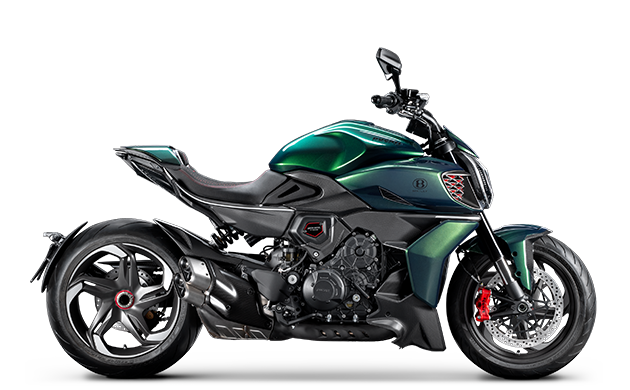
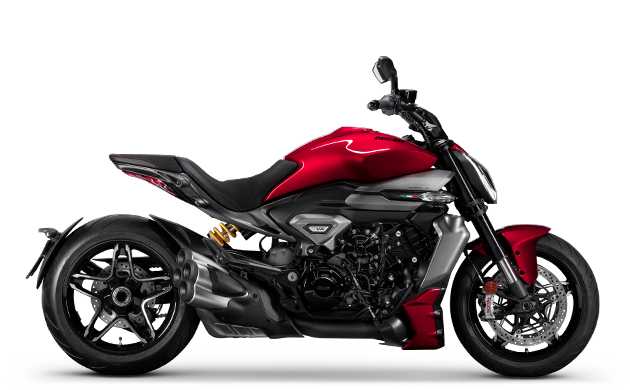
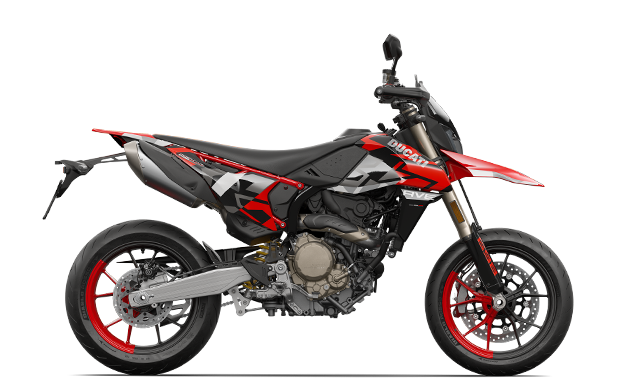
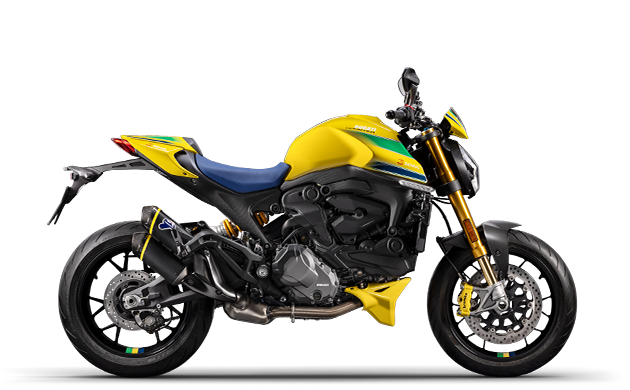
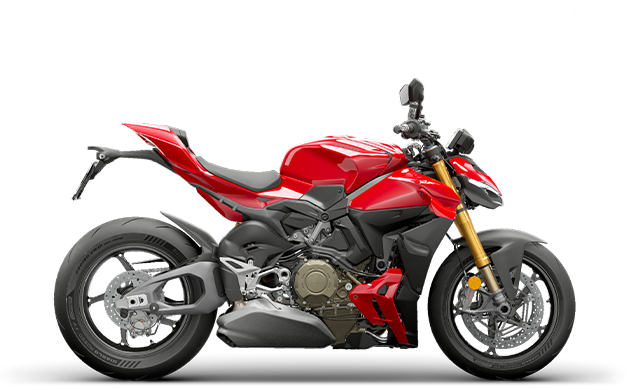
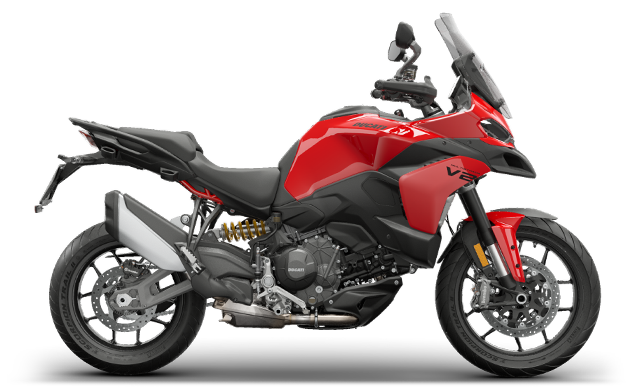
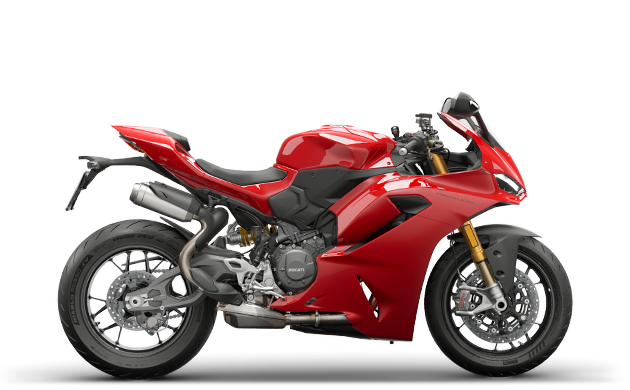



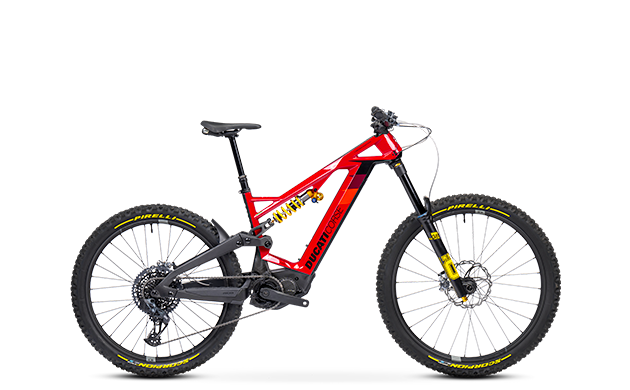

- Events
- Ducati Academy
- Travel Adventures
- Ducati Stories
- News

EXPERIENCE DUCATI PASSION
Discover all the exclusive Ducati experiences, aimed at all the fans and designed to ensure maximum enjoyment!
Ducati Experience- Motogp
- Superbike
- Motocross
- MotoE
- Services
- Maintenance
- Connectivity
- Dealer Network
- Who We Are
- Innovation
- Design
- Corporate Social Responsibility
- Partners
- FONDAZIONE DUCATI
- Borgo Panigale Experience
- Current Offers

Multistrada dynasty
Multistrada (meaning ‘Multi-road’) - there was never a more perfect name for a bike that would shape Ducati history like few others. A name that says so much about a model that changed the course of the Italian company, essentially becoming a brand within the brand. Multistrada. An international name, because it is always pronounced in the same way, whatever part of the world you come from. It is a Multistrada, whether you live in Italy, France, Germany or Australia.
The idea of proposing a multi-faceted Ducati, more versatile and suited to a variety of conditions of use – without forgetting the high performance that characterises every Ducati – dates all the way back to 2003. Almost twenty years and more than 100,000 bike sales later, the Multistrada has traced a rather unexpected path, venturing down roads that the brand had not previously explored and even carving new ones. The arrival of each new model on the market has represented a milestone not just for Ducati but for the entire motorcycling world. Because each new model has debuted technologies that other companies have gone on to adopt within their own ranges.

First generation
2003 marks the start of the Multistrada dynasty. With a new lease of life, Ducati has long been associated with the concept of extreme sports attitude. The 916 and the Monster have become icons, while the Supersport bikes are for the purists. But the company realises that while sports bikes satisfy the hard-core enthusiasts, the future that is developing will require more versatile models, suited to sports use but also touring, perhaps heavily loaded up with luggage. All without losing that Ducati spirit.
With its 17” front wheel (other crossovers of the time had an 18-inch solution), the newly created Multistrada promises supermotard-style corner entry and sports-style performance. Crossover yes, but with a Ducati soul and all the right elements, including the trellis frame, single-sided swingarm, 1100 cc air-cooled Desmodue engine, and a dry clutch. And a record-breaking weight of just 195 kg. The front-heavy setup seems to emphasise the speed with which it will enter the corners.

Is it a Ducati? Undoubtedly so, as the engine and trellis frame never lie, but the Multistrada is something that has never before been seen. A bike that begins to carve an innovative path, gaining in volume but losing none of its sleekness. One example is the tank, produced as a single piece that ends under the rider’s seat, a solution that the Superbikes and GP bikes of the time are beginning to adopt, but that has never been seen on a bike in this segment. And then there is the unique design, so very different that the first prototype is truly tantalising in style.



-
Multistrada 620, the first “small” version
![]() As the 1000 Ds is presented, it is immediately clear that the Multistrada will not be a one-off but rather a family of bikes. The fourth in fact, alongside the already existing Superbike, Supersport and Monster families. And so it is that, at Intermot 2004, Ducati presents a sportier S version for more expert riders and the small 620, the range’s entry model.
As the 1000 Ds is presented, it is immediately clear that the Multistrada will not be a one-off but rather a family of bikes. The fourth in fact, alongside the already existing Superbike, Supersport and Monster families. And so it is that, at Intermot 2004, Ducati presents a sportier S version for more expert riders and the small 620, the range’s entry model. -
A brand-new swingarm
![]() The most visible difference is clearly the swingarm, which replaces the single-sided solution. To create it, Ducati uses hydroforming technology (steel deformation using powerful water jets) for the first time to bend it without causing it to lose resistance at the junction with the manifold.
The most visible difference is clearly the swingarm, which replaces the single-sided solution. To create it, Ducati uses hydroforming technology (steel deformation using powerful water jets) for the first time to bend it without causing it to lose resistance at the junction with the manifold. -
Lighter and more manageable
![]() The Multistrada 620 weighs 13 kg less than the 1000. A total dry weight of 183 kg promises exceptional handling, thanks also to the use of narrower rims and tyres (160/60 front and 120/60 rear).
The Multistrada 620 weighs 13 kg less than the 1000. A total dry weight of 183 kg promises exceptional handling, thanks also to the use of narrower rims and tyres (160/60 front and 120/60 rear). -
The Multi within everyone’s reach
![]() The engine is the same classic two-valve twin already used on the best-selling Monster. The only minor variation lies in the different filter box and exhaust, which do not affect the maximum power and torque values (63 HP at 9500 rpm and 5.7 Nm at 6750 rpm) but help to “fill out” and regulate delivery at medium revs.
The engine is the same classic two-valve twin already used on the best-selling Monster. The only minor variation lies in the different filter box and exhaust, which do not affect the maximum power and torque values (63 HP at 9500 rpm and 5.7 Nm at 6750 rpm) but help to “fill out” and regulate delivery at medium revs.

Introducing the fourth generation of Multistrada.
Sportier and more touring-oriented, more capable off-road and easier in an urban setting. The most advanced Multistrada of all time.
Discover Multistrada V4Second generation
Codename “Cayenne”. This is how the Multistrada 1200 comes to be known internally. A name that says a lot about how different the project is set to be, in the minds of those working on it, with respect to everything Ducati has done up until this point. The most symbolic bike in Multistrada history and the one that, at least until the arrival of the V4, will represent the real turning point. Not only for the family, but for the brand as a whole, which goes from being simply a manufacturer of sports bikes to something more, proving that it can branch out and look to the future.
The Multistrada 1200 does not just chase the maxi enduros but overtakes them, going so far as to create a new segment and forcing the competition to expand its vision. A crazy bike, at least on paper, with a level of technology and performance never before achieved by a bike of this kind. Are those at Ducati right in thinking that they have invented the bike that the world was missing?

In designing the Multistrada 1200, the work group expands its vision to conquer a segment in which comfort and space on board are the priority. It is important to cut, lengthen, lift and boost the dimensions, creating more space for both rider and passenger, improving the aerodynamic protection, and offering more luggage loading options.
-
A more modern look
![]() The Multistrada 1200 changes face with respect to 1000. The top fairing again reflects the curves of the tank, but the overall look is more angular, more geometric, more modern.
The Multistrada 1200 changes face with respect to 1000. The top fairing again reflects the curves of the tank, but the overall look is more angular, more geometric, more modern. -
An unmistakeable gaze
![]() Characterising the overall aesthetic is the beak, extending beyond the 17” front wheel and offset with a slender tail section, which appears thinner thanks to the lower exhaust.
Characterising the overall aesthetic is the beak, extending beyond the 17” front wheel and offset with a slender tail section, which appears thinner thanks to the lower exhaust. -
The Multistrada style
![]() A first step towards the design that will go on to characterise all Multistradas, the voluminous front section contrasting with the extremely slimline rear.
A first step towards the design that will go on to characterise all Multistradas, the voluminous front section contrasting with the extremely slimline rear.
Ducati has the Testastretta 1198, an extremely high-performance sports twin. But as well as horsepower, the Multistrada also requires torque and fluidity. This leads to the idea (one that persists to this day) to radically modify the timing, while retaining the desmodromic system. Hence, the creation of the Testastretta Evoluzione 11° engine, eleven like the degrees of crankshaft rotation during which both the intake and exhaust valves are open.



On launching the Multistrada 1200, Ducati adopts the “four bikes in one” claim. An assertion that is not far from the truth, because a simple click on the handlebar of the Multistrada is enough to alter the power delivered by the engine, the throttle response, and the intervention threshold for the electronic DTC.
This is the riding mode revolution, with four modes - Sport, Touring, City and Enduro - further enhancing a bike that has made versatility its very essence.

The final solution is Enduro mode, again with 100 HP, but with level 1 traction control and a raised shock so as to increase the ground clearance by 20 mm. All this is multiplied by three because the various Riding Mode settings adjust the suspension calibration depending on whether there is just a rider, a passenger, or a passenger with bags.
Third generation
With the third generation of Multistrada, Ducati again picks up the pace, focusing particularly on the mechanics, which are worthily represented by the engine. The brand-new Testastretta DVT with its 160 HP and 136 Nm of torque is equipped with double variable timing. Both the intake and exhaust valves can vary the timing, and this is an absolute first, the Multistrada once again raising the technological bar.
The new Multistrada also stands out for its on-board technology, which reaches new heights with the arrival of the most cutting-edge electronics to be found on a bike at this time.
An essential role is played by “big brother”, which monitors the entire system, managed by various control units. This is known as the IMU (Inertial Measurement Unit).



It almost goes unnoticed, because the Multistrada 1260 project is not as revolutionary as that of the previous 1200, or the subsequent V4. Yet in reality, and although it technically inherits the layout of the 1200, the 1260 can still be considered a brand-new bike.
Once again, the evolution of the Multistrada revolves around the arrival of a new engine, an updated version of the 1262 cc Testastretta 11° DVT used to power the Diavel. An engine that perfectly marries with the Multistrada philosophy, ensuring both first-rate performance but also usability and an enjoyable ride.
-
A bolder look & feel
![]() The designers work in the name of continuity. People like the lines of the 1200 and so there is little point revolutionising them, also because the engine may have changed but the layout remains the same. All the stylistic elements are there (the impressive front end, the slender rear, a short overlapping side exhaust), but the Multistrada 1260 has more mature lines.
The designers work in the name of continuity. People like the lines of the 1200 and so there is little point revolutionising them, also because the engine may have changed but the layout remains the same. All the stylistic elements are there (the impressive front end, the slender rear, a short overlapping side exhaust), but the Multistrada 1260 has more mature lines. -
The first with an airbag
![]() The 1260 D|Air version with Dainese airbag technology sets another record for the Multistrada family and is the first to come with an electronics unit connected to an airbag worn by the rider. Another step towards heightened safety and increased comfort, which on the Multistrada go hand in hand with performance.
The 1260 D|Air version with Dainese airbag technology sets another record for the Multistrada family and is the first to come with an electronics unit connected to an airbag worn by the rider. Another step towards heightened safety and increased comfort, which on the Multistrada go hand in hand with performance. -
Even greater power
![]() The Testastretta DVT twin adopts the same variable valve timing system with independent intake and exhaust control as the 1200, evolving and updating it. And, in the meantime, the power grows. With the same bore value (106 mm) as the previous engine but with stroke that goes from 67.9 to 71.5 mm, this version of the Testastretta DVT achieves 158 HP (116 kW) of power at 9750 rpm and 129.5 Nm (13.2 kgm) of torque at 7500 rpm.
The Testastretta DVT twin adopts the same variable valve timing system with independent intake and exhaust control as the 1200, evolving and updating it. And, in the meantime, the power grows. With the same bore value (106 mm) as the previous engine but with stroke that goes from 67.9 to 71.5 mm, this version of the Testastretta DVT achieves 158 HP (116 kW) of power at 9750 rpm and 129.5 Nm (13.2 kgm) of torque at 7500 rpm. -
Even greater control
![]() The electronics package is as comprehensive as ever, based on the IMU inertial platform and comprising ABS Cornering Bosch, Ducati Wheelie Control (8 levels), Traction Control (8 levels) and cruise control. Added to which there is Ducati Skyhook Suspension (DSS) Evolution, based on the Sachs fork and shock, Vehicle Hold Control to prevent any unwanted slippage, and combined braking as standard, integrated with Cornering ABS.
The electronics package is as comprehensive as ever, based on the IMU inertial platform and comprising ABS Cornering Bosch, Ducati Wheelie Control (8 levels), Traction Control (8 levels) and cruise control. Added to which there is Ducati Skyhook Suspension (DSS) Evolution, based on the Sachs fork and shock, Vehicle Hold Control to prevent any unwanted slippage, and combined braking as standard, integrated with Cornering ABS.
The Multistrada 950 is not simply a scaled-down version of the 1200, but a bike that carves its very own path, offering a combination of never-before-seen technical solutions and, particularly, a level of equipment that stands out in the segment.

Easier, more comfortable, more enjoyable. New Multistrada V2
The ideal bike with which to fully enjoy every trip, versatile during every-day and urban use, but with the sports attitude and unmistakeable style that characterise very Ducati.
Fourth generation
“Are we still calling it Multistrada?” This is the doubt, a legitimate one, raised by Ducati designers as the Multistrada V4 project dawns. Because just like the 2010 bike, the Multistrada V4 changes the paradigm, revolutionises the concept, turns the tables. And, naturally, it continues to raise the bar when it comes to technology, forcing others to follow suit.

As with every Ducati, the engine is at the centre of the changes, which are momentous in this case, not just in terms of the framework adopted but also the technical solutions.
Deriving from the Desmosedici Stradale, which conquered hearts and minds on the Panigale and the Streetfighter, the V4 Granturismo exploits that sports attitude and combines it with technical characteristics that highlight the versatility and ease of use in all conditions.

The perfect synthesis of almost twenty years of development, the Multistrada V4 brings a technical revolution in which the ultra-compact and lightweight V4 Granturismo engine is undoubtedly the linchpin. Added to this are the electronics with front and rear radar, the chassis with monocoque frame and the 19-inch front wheel, for a design that is even more oriented towards function.
-
The first bike with double radar
![]() The Multistrada V4 is the first mass produced bike to be equipped with two radars, front and rear. These have two main functions, namely Adaptive Cruise Control, which allows for automatic adjustment of the distance to the vehicle in front, and Blind Spot Detection, which warns the rider about any vehicles in their blind spots. Another tangible step forward in safety terms and, particularly, a functional element that the rider will quickly come to rely on.
The Multistrada V4 is the first mass produced bike to be equipped with two radars, front and rear. These have two main functions, namely Adaptive Cruise Control, which allows for automatic adjustment of the distance to the vehicle in front, and Blind Spot Detection, which warns the rider about any vehicles in their blind spots. Another tangible step forward in safety terms and, particularly, a functional element that the rider will quickly come to rely on. -
Travel companion and assistant
![]() Behind the large plexiglas is instrumentation that has never been so comprehensive yet easy to read, the colour LCD panel on the V4 S boasting a 6.5” diagonal. The range of information is impressive but very logical, organised so that it can be easily used by the rider. And thanks to the Sygic GPS app, maps can be viewed on the dash, meaning that a rider’s mobile phone can be stored in the practical compartment complete with USB charging port.
Behind the large plexiglas is instrumentation that has never been so comprehensive yet easy to read, the colour LCD panel on the V4 S boasting a 6.5” diagonal. The range of information is impressive but very logical, organised so that it can be easily used by the rider. And thanks to the Sygic GPS app, maps can be viewed on the dash, meaning that a rider’s mobile phone can be stored in the practical compartment complete with USB charging port. -
Multistrada personality
![]() The main Multistrada style traits are all here, with the commanding front end and receding tailpiece, but the bike still manages to be original and innovative. Thanks also to the 19” front wheel and a central section that is as narrow as possible to facilitate reaching the ground, the Multistrada V4 is able to combine undeniable road-going sports attitude with a touch of real enduro charm.
The main Multistrada style traits are all here, with the commanding front end and receding tailpiece, but the bike still manages to be original and innovative. Thanks also to the 19” front wheel and a central section that is as narrow as possible to facilitate reaching the ground, the Multistrada V4 is able to combine undeniable road-going sports attitude with a touch of real enduro charm. -
Form follows function
![]() The design philosophy has always put the rider at the centre. And this time the rider is joined by a passenger, of fundamental importance on these bikes, together with the bags that can be loaded. The Multistrada V4 again represents the culmination of an evolutionary pathway that melds technology, mechanics and design.
The design philosophy has always put the rider at the centre. And this time the rider is joined by a passenger, of fundamental importance on these bikes, together with the bags that can be loaded. The Multistrada V4 again represents the culmination of an evolutionary pathway that melds technology, mechanics and design.
In 2010, American rider Greg Tracy powers what is essentially a production Multistrada to victory in the Pikes Peak Hill Climb, the famous timed ascent that takes place each year on the slopes of the Rocky Mountains. The following year, Ducati decides to participate in the race in an official capacity and creates a special version of the Multistrada, the sportiest and most adrenaline-fuelled of them all.
With the V4, the Multistrada Pikes Peak outdoes itself. It is no longer just a “version” of the Multistrada, enriched in terms of its equipment and with a sportier look, but a separate model entirely that starts from the same platform but differs in terms of its front wheel diameter, tyre section, suspension, swingarm and even electronics.




Discover the new Multistrada Pikes Peak
The sports traits of the Multistrada V4 S taken to the extreme, for the most powerful bike in the entire crossover segment.
 Sverige
Sverige
 DesertX
DesertX Diavel
Diavel
 XDiavel
XDiavel Hypermotard
Hypermotard
 Monster
Monster Streetfighter
Streetfighter Multistrada
Multistrada Panigale
Panigale
 A2 Licence
A2 Licence Off-Road
Off-Road E-Bikes
E-Bikes Limited Series
Limited Series


